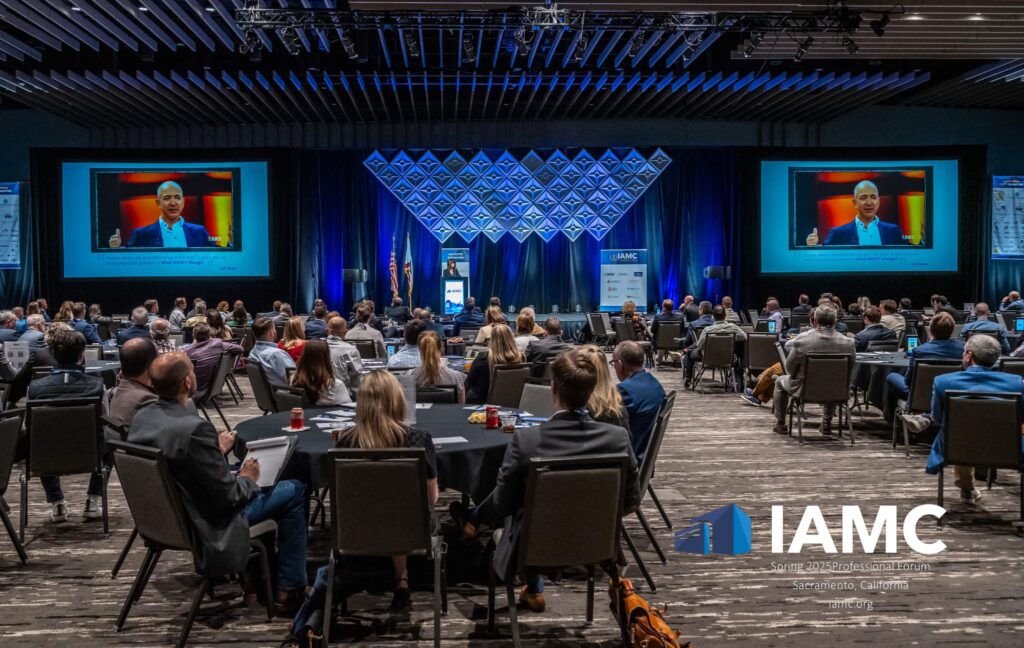The Industrial Asset Management Council (IAMC) Spring Forum in Sacramento, CA illuminated a decisive inflection point in industrial and manufacturing location decision strategy. While the traditional pillars of site selection logistics, labor, and incentives remain central, the dialogue has evolved. Increasingly, conversations are oriented around infrastructural certainty, environmental resilience, and the integration of advanced analytics in the process.

By Spencer Mitchell, Vice President | May 7, 2025
Energy Certainty Has Supplanted Energy Cost
In a departure from convention where price competitiveness led locations decisions, today’s site selectors are placing primary emphasis on certainty and speed of access to power. This shift reflects the outsized demands of data centers, electrified manufacturing, and energy-intensive logistics operations—industries where timelines for connection are frequently deal-breakers. Thus, regions that are able to demonstrate surplus capacity, grid resilience, and expedited permitting are emerging as clear front runners. In this context, deregulated markets such as ERCOT have garnered interest as increasingly flexible markets.
Water and Natural Resource Stewardship as Strategic Differentiators
As the demands of industry evolve, water infrastructure has emerged as a central factor in the site selection process. Sectors such as semiconductor fabrication, food processing, and next-generation battery manufacturing are fundamentally constrained by their access to reliable water resources in the near and long term. Beyond volumetric supply, companies are evaluating long-term sustainability, permitting complexity, and regional governance structures. States and municipalities capable of articulating a proactive natural resource strategy—one that balances industrial usage, population growth, and ecological resilience—will be positioned to capture the next wave of transformational investment.
Decision-Making is Now Quantitatively Sophisticated—But Still Relational
The most significant shift in site selection lies in its methodology, reinforcing the points outlined above. The proliferation of AI-enhanced modeling tools, such as Newmark and JLL’s AI-powered platforms has prompted companies to approach site decisions with an unprecedented degree of granularity and speed. Platforms capable of simultaneously optimizing for labor quality, transportation cost, carbon intensity, geopolitical exposure, etc. are becoming standard for site selection firms. And yet, amid the digitization, the role of human relationships with local experts remains paramount as communities must work collaboratively to source comprehensive information from private landowners, associated developers, and public utilities to provide reliable and advantageous data to maximize a community’s profile in site selection AI models.
Why This Matters for Fort Worth Economic Development
While the traditional pillars of site selection—logistics, labor, and incentive remain central, the dialogue has evolved. Increasingly, conversations are oriented around certainty in infrastructure, environmental resilience, and AI integration. In this context, Fort Worth stands out—not only for its quantitative strengths, but also for a culture built on trust, responsiveness, and collaboration. As investment priorities shift toward speed, certainty, and sustainability, Fort Worth and Texas offer both the capabilities and the relationships that advance strategic growth.
—
Spencer Mitchell is the Vice President of the Fort Worth Economic Development Partnership. The Fort Worth EDP works directly with companies, site selection consultants, and corporate real estate professionals who are interested in moving or expanding to Fort Worth, Tarrant County, and the surrounding areas. If you’d like to learn more about Fort Worth, please schedule a meeting with us or check out our Why Fort Worth page.